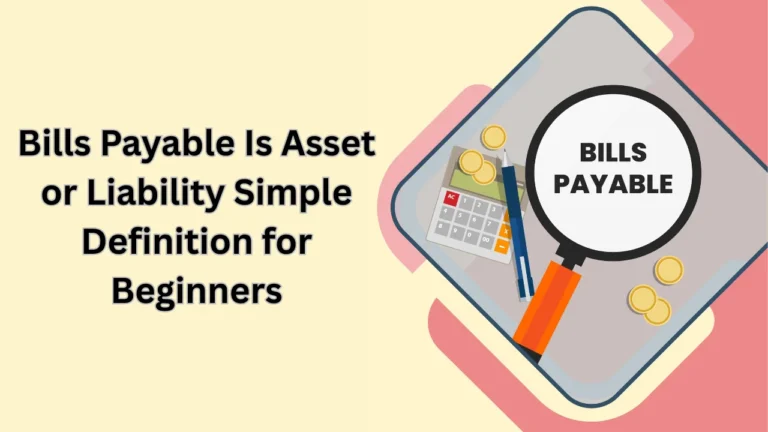In the world of trade, finance, and business, certain documents play a vital role in ensuring smooth transactions. One such instrument is the bill of exchange format, which is widely used in both domestic and international trade. Many people confuse it with promissory notes or cheques, but the reality is that a bill of exchange has its own legal identity, rules, and structure. Understanding it is just as important as knowing financial basics like vidharbha konkan gramin bank balance check, since both help you manage obligations and payments effectively.
What is Bill of Exchange?
A bill of exchange is a written document where one party instructs another to pay a certain amount to a third party on a fixed date. The bill of exchange format ensures that the payment order is legally valid and recognized under the Negotiable Instruments Act. It acts as a promise to pay and is enforceable in a court of law if the drawee defaults.
The use of bills of exchange dates back centuries when merchants across continents needed a secure way to settle debts without carrying large amounts of cash. Today, it is still relevant for companies, exporters, and importers.
Essential Features of a Bill of Exchange
The bill of exchange format includes certain essential features that make it valid. It must have a written order, an unconditional directive to pay, the names of the drawer, drawee, and payee, the amount in figures and words, and the signature of the drawer.
If any of these features are missing, the bill can become invalid. For example, if the payment is conditional, it will no longer be considered a true bill of exchange.
Importance of the Format
The bill of exchange format is not just a formality; it serves as legal proof of a financial transaction. It allows credit sales to occur without risk, since the seller knows that the buyer has accepted responsibility to pay. It also helps banks in discounting bills, which means they pay the holder in advance and later collect the amount from the drawee.
This function has a direct link with financial stability and liquidity in the market. For businesses, knowing the exact format ensures they do not face unnecessary legal disputes.
Specimen of Bill of Exchange
Here is a simple table showing how the bill of exchange format looks in practice.
| Field | Details to Include |
|---|---|
| Title | “Bill of Exchange” written at the top |
| Date and Place | When and where the bill is issued |
| Amount | Written in words and figures |
| Drawer | Person issuing the bill (creditor) |
| Drawee | Person directed to pay (debtor) |
| Payee | Person who receives payment |
| Due Date | Time of payment (after sight or fixed date) |
| Place of Payment | Where money will be paid, often a bank |
| Signature | Drawer’s signature and sometimes stamp |
This standard table makes it easy to understand the skeleton of a bill and how details are filled in.
Legal Aspects and Acceptance
The bill of exchange format must be signed by the drawer and accepted by the drawee for it to become legally binding. Acceptance shows that the drawee has agreed to pay on the due date. In case of refusal, the drawer has the right to sue for payment.
Sometimes, bills are also endorsed, meaning they are transferred from one person to another. Endorsement is common when a bill is used to settle multiple debts in a chain of transactions.
Bill of Exchange vs Promissory Note
Although both look similar, they are different in purpose and format.
| Aspect | Bill of Exchange | Promissory Note |
|---|---|---|
| Nature | Order to pay | Promise to pay |
| Parties | Drawer, Drawee, Payee | Maker and Payee |
| Acceptance | Needed by Drawee | Not needed |
| Liability | Drawee’s liability | Maker’s liability |
This comparison makes it clear why businesses prefer bills of exchange in trade. They reduce risk and transfer responsibility to the drawee.
Why Businesses Use Bills of Exchange
Bills of exchange help in smooth credit transactions. A supplier may not always demand immediate payment and can give the buyer time. In such a case, the bill acts as a legal safeguard. Banks also use them in financing, as they can be discounted before maturity.
Understanding this concept is as important as learning banking basics like the bgvb balance check number, which helps account holders track their money. Both tools ensure clarity, security, and control over financial obligations.
Advantages of Bill of Exchange
The bill of exchange format benefits both creditors and debtors. For the creditor, it acts as proof of credit sales and ensures timely payment. For the debtor, it provides breathing space by allowing payment after a certain period.
It also makes transactions safer compared to oral promises. If the drawee refuses payment, the bill holder can file a case in court, making it a strong legal document.
Practical Example of Bill of Exchange
Imagine a textile exporter in India selling goods worth ₹1,00,000 to a buyer in the UK. Instead of waiting for months without security, the exporter draws a bill of exchange. The buyer accepts it, promising payment in 90 days. The exporter can then approach a bank, get the bill discounted, and receive funds immediately.
Here is how the specimen would look:
BILL OF EXCHANGE No: 1123
Date: Mumbai, 01/10/2025
Ninety days after sight, pay to the order of XYZ Exports the sum of Rupees One Lakh only (₹1,00,000).
To: ABC Textiles Ltd., London
At: Standard Bank, London
Signed: XYZ Exports Pvt. Ltd.
This example shows the importance of having a clear bill of exchange format.
Limitations of Bills of Exchange
While bills are helpful, they have certain drawbacks. If the drawee fails to pay, the holder must go through legal procedures, which can be time-consuming. Also, bills may not be useful for small transactions due to paperwork.
Another limitation is the risk of forgery or fake acceptance, which can harm genuine creditors. Despite these issues, bills remain one of the most trusted trade instruments.
International Trade and Bills of Exchange
In global business, bills of exchange are extremely popular. Exporters use them to ensure payment across borders. Since foreign trade involves currency risks and delays, bills act as a bridge of trust.
Banks in international trade often play a major role in handling and collecting bills. They ensure that sellers get their money and buyers get their goods on agreed terms.
Conclusion
The bill of exchange format is more than a financial document; it is a legal tool that supports trade, builds trust, and reduces risk. It is widely used by businesses to secure payments and by banks to provide credit. By understanding its details, anyone dealing with trade or finance can avoid disputes and ensure smoother transactions.
Just like checking balances in modern banking, where people rely on tools such as vidharbha konkan gramin bank balance check or bgvb balance check number, businesses depend on the correct bill of exchange to maintain financial clarity.
Knowing how to draft, read, and use this format empowers students, professionals, and entrepreneurs alike. If you ever step into business transactions, make sure you not only understand the theory but also practice preparing a valid bill.




